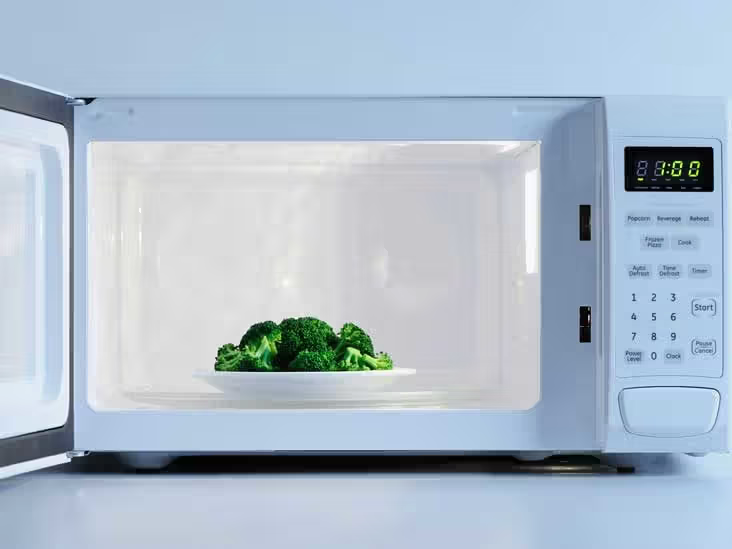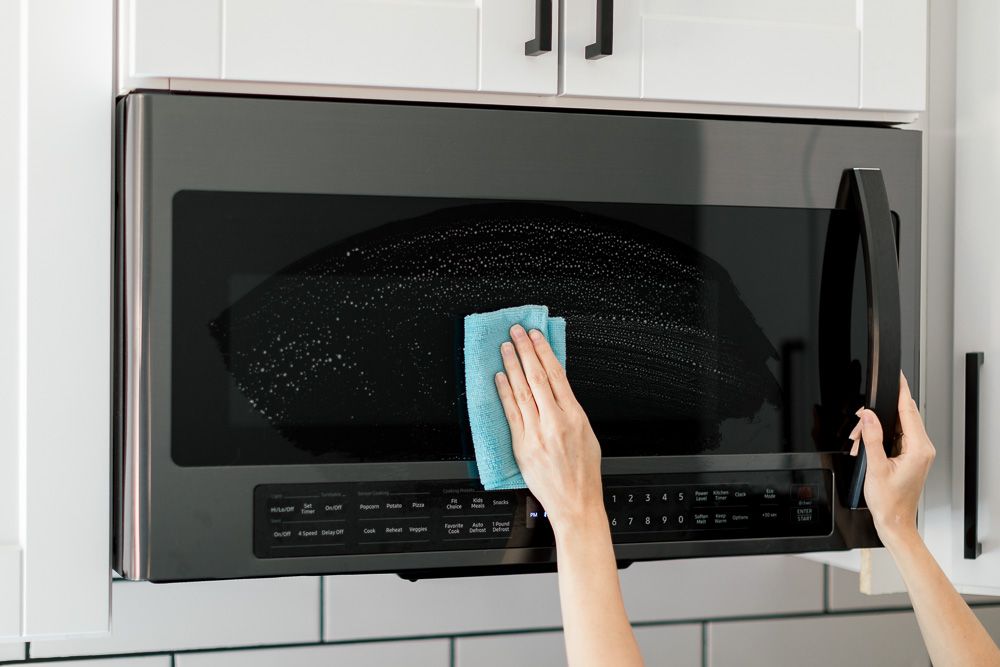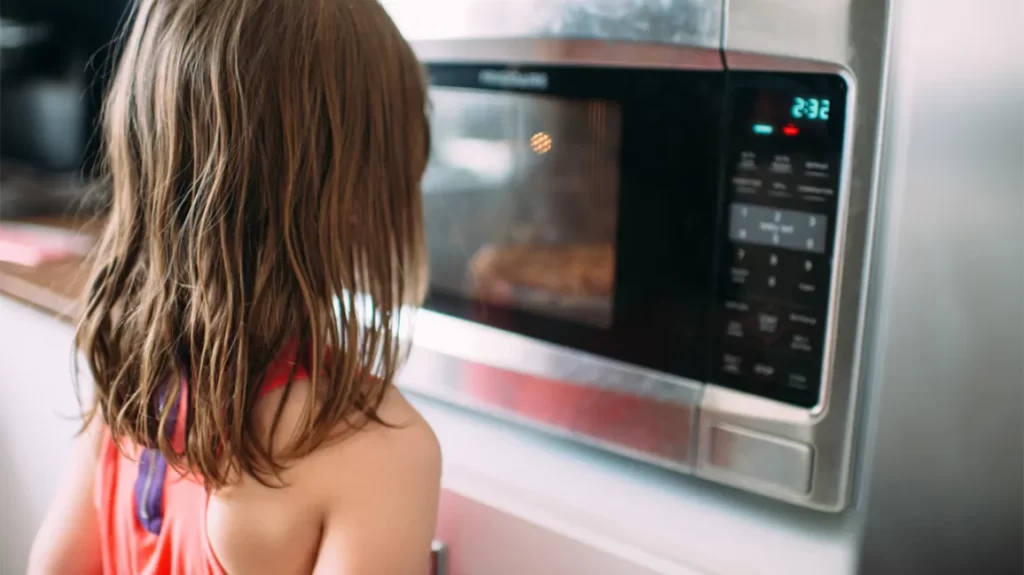An appliance that uses electromagnetic waves to cook food or heat your food is a microwave. Almost everyone has a microwave at home these days because it is so convenient for heating or cooking food.The electromagnetic waves cause the water molecules in the food to vibrate and generate heat giving us easy and fast prepared food. It is a well known fact that plastic or metal containers are not suitable for microwave cooking and heating. Some people prefer using a glass container in the microwave. Can you put glass in the microwave?
Is it good to use glass in the microwave

Yes, you can use a glass container with your microwave for cooking and heating purposes. They are considered microwave safe as any other appliance that are labelled to be used as safe materials to be. Not all glass is microwave safe, and some glass is not thick enough to withstand the sudden high temperatures used in the microwave.
Some glasses can break if heated too high due to their thickness. It is best to stick with products labelled as microwave safe for any make in plastic, metal or glass
Most recently produced glassware is marked with either a label or a symbol to indicate its safety when heated in a microwave oven. Even with such a clear label, never microwave glass jars or other glass containers directly from the cold, as this can unnecessarily stress the glass structure. And avoid microwaving coloured or painted glass unless the dish specifically states that it is microwave safe.
Despite the dangers of heating glass in the microwave, it is still a great material and a great alternative to heating food in toxic plastic when done safely. Choose microwave safe glass for your kitchen to make cooking as fast and convenient as the microwave itself.
Causes of glass break in a microwave oven

The most common reasons that cause glass to break in the microwave are:
- Microwave glass usually has small air bubbles that expand when heated. As the temperature of these bubbles increases, the glass eventually cracks because the increased heat causes the glass material to stretch unevenly.
- If the stresses are strong enough, they will cause the glass to break. Ornaments and decorations are also important to the structural integrity of glassware.
- Some glass containers are decorated with metal, which makes them unsafe to use in the microwave. Heated in microwaves, a metallic spark breaks the glass.
- Safety-marked glass may shatter when microwaved if it has small cracks or splits. Uneven heating can also cause glassware to break.
- Before putting in the microwave, check the condition of the glassware. Avoid using glass with silver or gold edges in the microwave because the metal can react with electromagnetic waves.
Checking which glass to put in the microwave

To check whether glasses are microwave safe or not, even if they don’t have a label. You can even do this without risking the glassware cracking or breaking.
- Put the glass container in the microwave for a minute or two.
- If your container is hot after just one minute, it is not microwave safe.
- Once it is slightly cool, it is perfectly microwave safe.
- Ceramic plates, bowls and dishes are microwave safe because they are fired and baked from clay.
- Ceramic materials are probably microwave safe, even if they are not labelled.
- Microwave-safe containers include foam-insulated cups, milk containers, and brown paper bags. They must be placed in ceramic dishes.
- Glassware heated in the microwave and cooled too quickly can crack or break.
- Many of them, especially the tinted ones, have a label saying whether or not they are microwave safe.
- If the glass contains metal, do not cook it in the microwave.
- Do not use aluminium foil and metal take-out containers with glass
- Turn the container over and look for the labels on the bottom that indicate whether it is microwave safe.
- Many glassware and dishes are either – non microwave safe or microwave safe.
- Consult your microwave manufacturer and model manual for proper instructions.
- Most microwave ovens have a- Settings, Menu, Power Level or button that allows you to reach the highest power setting. Fortunately, the default setting is usually the maximum power setting, and other modes such as defrost have their own power settings.
- Fill a glass bowl or measuring cup with a cup of water.
- Place it in the appropriate glass container that you intend to heat in the microwave.
- If you have a larger container or container, you can place the cup inside or on top of the container.
- Do not use the container as water bowls for this microwave safety test. A cup of water is the key to this experiment. For the safety of utensils, you should heat the cup without heating the cup.
- Set the time and check the heat
- Put the glass container and cup in the microwave for one minute. If the dish or container is warm or hot after the process, it is not microwave safe.
- If the dish or the dish itself is cool or normal temperature with hot water, the dish is microwave safe.
The trouble
Using a glass container can be a trouble as glass that is not microwave safe can have air bubbles so small that they are not visible to the naked eye. If these bubbles inside the glassware expand enough due to the increase in temperature, this can lead to glass breakage or at least a hairline crack in the dish, and inturn damaging your microwave.
Coloured Glass with Metal
If your glassware has metal handles, they can cause sparks and the container will also break into pieces. Coloured Glassware should be labelled microwave safe.
Dyes used to glass may not be food safe. The labels are there to ensure that the coloured glass container does not contaminate your food as it heats up in the microwave.
Ceramic vs. Glass
Whereas while cooking or heating your food in glass you should be aware of—
Microwave safe labelled

Materials are labelled as microwave safe, they should not be overused. If they are cracked and torn, do not microwave them.
If you are using glassware that has hairline cracks, it is still usable but do not use it to heat in the microwave. Ensuring your glass bowls and plates are microwave safe. This is especially useful if the bottom of the dish or plate does not have an indicator or label indicating that it is microwave safe.
Examine the label
If the label is not at hand, you can safely test the dish yourself in the microwave
Heating test
Turn the microwave to the highest setting. Microwave heat settings vary by model or manufacturer.
Water Test
Microwave Safe Materials

Look for the magic words – microwave safe than only use your container in the microwave
It is good to use a microwave safe glass container, something that won’t easily break or catch fire when heated. However, if it is thin glass or has cracks, you should be careful. It may have a heat or temperature limit. Also, let it cool gradually after microwaving, as it can break if it cools too quickly. Fortunately, there are ways to check if new glassware is microwave safe, even if it isn’t labelled. accordingly.
Ceramics are safe to use in the microwave. You usually don’t even need to check your china sets if they’re labelled microwave safe. All porcelain products are generally microwave safe. However, don’t use breakable ceramic in the microwave, or you could make the damage worse. Also do not microwave ceramic plates with metal surfaces or edges.
Apparently plastics labelled microwave safe are good to use in the microwave. If it doesn’t have a label on it, don’t use it in the microwave.
Avoid disposable or disposable plastic containers as they can contaminate food in the microwave. If your plastic has metal or film on it, don’t use it in the microwave because the metal can also ignite or catch fire in the microwave.
Styrofoam containers are labelled microwave safe. Do not microwave disposable dishes from restaurants etc. Some microwave-safe Stiros can also be microwaved only once.
Also, do not microwave a damaged Styro container, even if it is labelled as microwave safe. The safest Styrofoam container for
microwaves is one that is undamaged, has not been microwaved before or multiple times, and has a label that states it is microwave safe.
Conclusion
Knowing the use and safety of microwave ovens is the key to cooking and heating your food.You would think your food would be safe in glass. Some have small air bubbles that can burst if heated too long, too hot or too long. If your glassware is not marked as microwavable be careful if the glassware is thin and do not use it in the microwave. For thicker glasses, check they are microwave safe with the one-minute heat test. If the glassware is warm to the touch after heating and has not cooled in any areas, it is not microwave safe.
Frequently Asked Questions (FAQs)
Why does glass break in a microwave oven?
Microwave glass usually contains small air bubbles that expand when heated. As the temperature of these bubbles increases, the glass eventually cracks.If the stresses are strong enough, they will cause the glass to break.
Can a glass jar be microwaved?
Yes, it is safe to microwave a glass jar without a metal cap, as long as there is no metal on the label.
What you should not allow in the microwave?
Metals including stainless steel and aluminium foil shouldn’t be allowed to heat in the microwave. Metal surfaces reflect microwaves, which increases the heat inside the device and can cause a fire.





